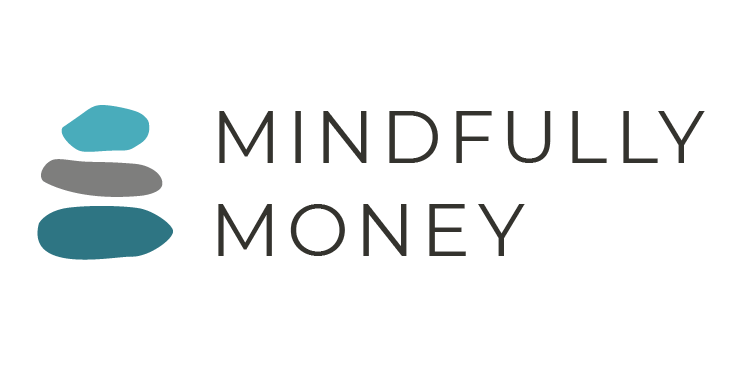How to Invest in Your 401k the Easy Way
Wondering how to invest the money in your 401k or other retirement account?
I still remember trying to figure out how to invest in the 403b I got at my first job after college. I looked at that list of investment options and had no idea what to do or what any of those terms meant. I even met with a financial advisor through the company that managed my 403b and it was not even remotely helpful. He wanted to know if I thought that social security would be around when I’m retired and I kept thinking that the existence (or not) of social security had nothing to do with how much I was going to save or how I’d invest the money.
If you’re like I was, you’ve probably found yourself randomly selecting investment options without any rhyme or reason, and you certainly don’t have a strategy.
Maybe you’re wondering if you’re doing the right thing. Maybe you’re so overwhelmed with trying to figure it out that you’ve completely ignored it. I’ve been there too.
This is one of many reasons why I’ve spent the last few years taking financial planning courses and reading ALL of the personal finance books. Now I can help make investing in retirement accounts easier for you. Today I want to tell you about the absolute easiest way to invest your retirement savings: target date funds.
Note: I am not an investment advisor. This advice should be considered educational in nature. It is based on generally accepted principles and research. I am not recommending specific investments, but rather providing information about how one type of investment works. And of course, past performance does not guarantee future results.
Why Invest?
Investing is important because you need your money to grow. It is unlikely that you will have enough for retirement by just saving money in a savings account. Investing helps you take advantage of the growth in the stock market that has historically happened over time as well as the power of compounding.
Additionally, you receive tax advantages when you invest in a retirement account. 401ks and IRAs give you a tax deduction now and allow your money to grow without paying taxes until you withdraw it. Roths are made with money that has already been taxed, but it grows tax-free and there are no taxes when you withdraw it. These tax advantages allow your money to grow more than it would outside of a retirement account.
We’re all aware that the stock market carries risk and sometimes goes down. But when it comes to investing, the question is not “can I afford to take the risks of investing,” but rather “can I afford not to.”
Yes, there are risks in investing, but if you do not invest the money, it will never grow. In fact, it will actually lose value because of inflation. Over time, the cost of basic living expenses generally rises. If your money does not grow faster than the rate of inflation, in 20 years that money will buy less than it does today. The risk of not investing is that you won’t have enough in retirement.
How much?
You should be investing as much as you can. Ideally, you will max out all of your retirement accounts. You can find the current contribution limits on all account types on the IRS website. A good goal is to contribute 15% of your income.
However, that’s not always possible. If that’s not something you can do right now, do what you can. Start somewhere. Don’t give up just because you can’t save that much right now. Any amount is better than nothing.
If your employer offers any sort of match, you should do everything you can to contribute enough to get the full match. For example, your employer might offer to contribute 3% of your salary if you contribute a certain amount. Check with your HR department for details.
Get the Right Mindset
The value of your investments is going to go up and down. That’s just part of investing. But guess what: you don’t care. You don’t care because you don’t need the money for a very long time. Until you get closer to needing the money in retirement, it doesn’t matter how much the market goes up and down.
If you’re not selling the investments, you’re not losing money. Once you get closer to retiring and you need to withdraw money, you should work with a financial advisor to come up with a withdrawal plan that prevents you from having to sell in a down market. Until then, market swings don’t matter.
Although there is no guarantee this will continue to be the case, historically, the stock market has always gone up over long periods of time.
How to Invest the Easy Way
By far the easiest way to invest is by using a target date fund. It is the ultimate fix-it-and-forget-it. You can set up all your contributions to go into your target date fund and basically ignore it.
What Is a Target Date Fund?
A target date fund is a mutual fund or ETF that is managed in such a way that the level of risk changes over time. When you are younger, you can take on more risk and tolerate larger market fluctuations. As you approach retirement, you want your investments to fluctuate less and be more stable so that you don’t end up having to withdraw money during a downturn and lock in losses. A target date fund manages all of this for you.
When you pick a target date fund, you choose one based on a target date, or when you will need the money. For a retirement fund, this would be the year closest to when you expect to retire. So if I’m 40 in the year 2020 and I want to retire at 65, I would choose a 2045 target date fund.
Although the actual funds sometimes have different names, target date funds are easily identified because the name of the fund includes a year. Most 401k’s and other employer-based retirement plans offer target date funds as an option.
With target date funds, you don’t need to worry about all those big investment terms like asset allocation, diversification, and rebalancing. Target date funds do it all for you.
The Disadvantages
The downside to target date funds is that you pay extra for the management service the investment company provides. You can find out how much the fee is by looking at the expense ratio. Many target date funds charge as much as .7%, though companies like Schwab are starting to offer lower priced options.
Fees can erode your investment returns and significantly affect your earnings over time. If you’re able to compare, try to find one with lower fees, but that’s not always possible with the limited options you get in a 401k or equivalent.
Another reason you might not want a target date fund is if your circumstances are different than what is considered standard. Maybe you want to retire early or keep working longer. Maybe you have enough that you don’t need the money in your retirement account right away. Consider working with an investment advisor or learning more on your own if this applies to you.
And of course, target date funds come with all of the usual risks of investing. Nobody can guarantee what will happen. All we can do is make our best guesses based on what has historically happened. In that context, target date funds have a pretty solid strategy.
Could you do better? Maybe. But you could also do a lot worse.
The Bottom Line
Target date funds are best for beginners and those who want to do something easy and forget about it. You can make sure all of your contributions go into one target date fund and then step back and ignore it. They are just so easy.
If you want to spend a little more time and energy on investing, the best strategy is to buy a diversified set of index funds and periodically rebalancing. This probably seems super scary, but it’s not that big of a deal once you get the hang of it. Investment companies are coming up with all sorts of tools to help you do this.
In the end, target date funds are usually not the cheapest and sometimes don’t quite fit each individual's needs. However, they are easy and so much better than doing nothing at all. If you’re not sure what else to do and don’t have the time or interest to figure it out, target date funds are an excellent choice for you.
Pin for later:













Worried it’s too late to save for retirement? While saving for retirement is easier when you start earlier in life, you can certainly still do it. Here are some tips to get you started on saving for retirement no matter what your age. Get started today!